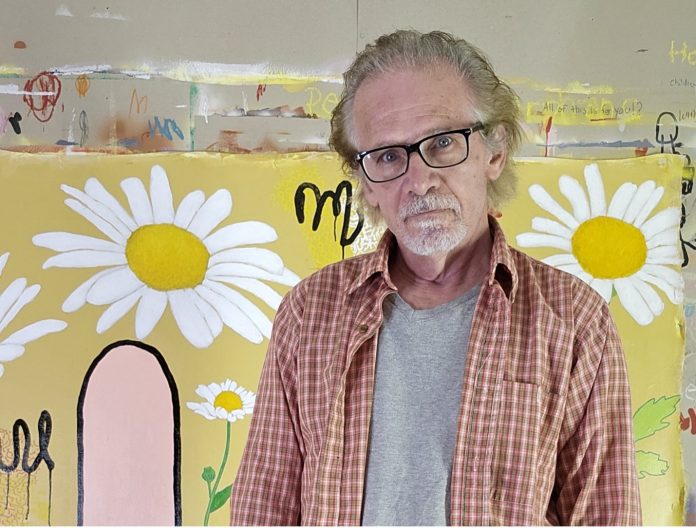Nestled within the idyllic landscapes of Woodstock, a town renowned for its artistic spirit and serene beauty, an event was brewing that would challenge perceptions, spark impassioned debates, and bring to the forefront the intricate dance between creative expression and societal norms. At the heart of this narrative stood a flag sculpture crafted by Peter Pryor, a visual artist celebrated for his postmodern neo-expressionist style. In a community steeped in artistic sensibilities, the stage was set to profoundly explore art’s role in provoking thought and reshaping discourse.
As whispers of an impending protest echoed through Woodstock’s tranquil streets, intrigue was in the air. The cause of this stir was Peter Pryor’s latest artistic creation. This fashioned flag sculpture seemed destined to spark controversy. But behind the scenes, Pryor’s intentions were far from what the rumors suggested. His aim was not to desecrate but to unfold the deeper layers of meaning associated with symbols held sacred by society. The town’s anticipation was tinged with uncertainty and curiosity. This potent combination laid the groundwork for a poignant artistic statement.
The much-anticipated day dawned, and the community congregated at Woodstock’s iconic sledding hill, their expectations veering towards a visual spectacle of flag-burning. However, what unfolded was a surprise that defied convention. Peter Pryor and his companion, Joy Marden, clad in red, white, and blue patriotic colors, presented not flames but a counter-narrative. With slices of apple pie adorned with American flags, they symbolized unity, emphasizing that this moment was not about destruction but inviting nuanced conversations and engaging in a dialogue transcending the surface.
Guardians of Peaceful Expression
As the sculpture took center stage, the community’s gaze also turned to local law enforcement. Police Chief John Salter and Officer David Downs stood vigilantly, not as enforcers, but as silent sentinels of the town’s commitment to peaceful protest and freedom of expression. Their presence reflected Woodstock’s values—promoting dialogue and exchanging ideas, even in the face of potentially contentious situations. They served as a reminder that artistic expression could find its place within the community without causing discord.
A Journey Through Artistic Resilience
Peter Pryor’s journey to this pivotal moment was paved with personal resilience and artistic evolution. His upbringing in foster care during his formative years shaped his tenacity and drive. Armed with a degree in fine arts from Pratt Institute in Brooklyn, Pryor’s path was marked by challenges and setbacks. Yet, his determination led him to embrace his unique artistic vision, creating a body of work that reflected his experiences, convictions, and desire to challenge conventional norms.
Beyond the Sculpture – A Multifaceted Artistic Exploration
While the flag sculpture seized the spotlight, it was but one chapter in Pryor’s expansive artistic journey. His creative endeavors spanned various mediums—film, installations, and performances—all marked by his distinctive postmodern neo-expressionist touch. Pryor’s incorporation of film projections breathed life into his performances, adding layers of intrigue and depth that captivated audiences and invited them to embark on an emotional journey.
A Polarizing Debate on Freedom and Expression
The impact of the flag sculpture transcended Woodstock’s serene confines, extending its influence to an ongoing national discourse—the delicate balance between freedom and expression. Initially perceived by some as potentially affronting a cherished symbol, the sculpture unveiled its deeper purpose over time. It catalyzed reflection, igniting conversations about the intersection of artistic intent and societal values. In an increasingly intricate world, Pryor’s creation echoed the sentiment that art could be a conduit for questioning assumptions, sparking dialogue, and fostering connections transcending the surface.
In a world where creativity often intersects with established norms, the flag sculpture was a poignant reminder that artistic expression could be both a force for challenge and a unifying agent. It exemplified the notion that through dialogue and thoughtful reflection, art had the potential to transcend the boundaries of interpretation, inspiring change and enriching the collective consciousness. As Woodstock continued to engage with Pryor’s work, one truth remained evident: the sculpture, once a focal point of controversy, had blossomed into an emblem of the enduring power of artistic expression—a testament to the remarkable ability of art to provoke thought and reshape discourse.

